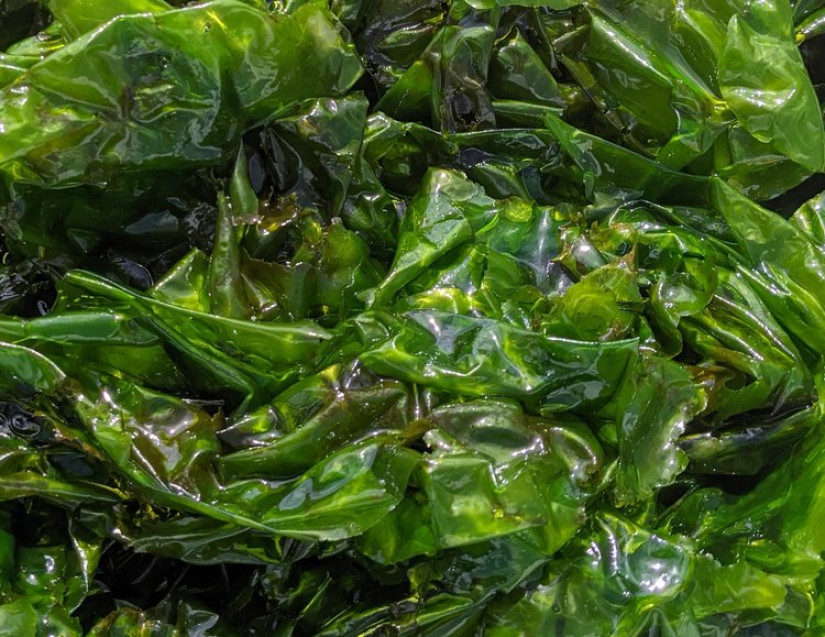
Photo: Cultured ulva (Monterey Bay Seaweeds)
core-lit apparatus for seaweed hatcheries (CLASH)
Outside of a handful of small producers in California, Alaska and New England, the vast majority of seaweed used in the U.S. is imported from Asia, leaving us with an import-export deficit of more than $33 million. It's a product ripe for highly sustainable land-based farming but what’s missing are the hatchery facilities needed to launch a robust domestic seaweed industry.
A funding grant from the National Oceanic and Atmospheric Administration and National Sea Grant Office hopes to change that by creating a novel, non-proprietary hatchery technology that can be used in land-based facilities for seaweed production to help serve and expand the domestic market (project funding announcement: https://caseagrant.ucsd.edu/news/california-sea-grant-receives-nearly-700000-develop-new-hatchery-technologies-seaweed-farming)
While dulse, red ogo and sea lettuce are the most popular seaweeds in the U.S., dozens of other species are suitable for growing and food, but two things are missing: the culturing technology and enough seaweed hatcheries.
Project partner Dr. Michael Graham, professor at Moss Landing Marine Laboratories, and his colleagues have led the development of a prototype of a modular hatchery system that can be used to address this seaweed seed shortage. The new grant will provide Graham, California Sea Grant Extension Specialist Theresa Talley and their team of aquaculture scientists and industry members the ability to refine the design of the system, develop accompanying protocols, test the system in industry settings throughout the state and get the system into the hands of new growers.

Project goals & Objectives
- To build new hatchery technologies specific to land-based seaweed production systems in order to develop new strains of seaweeds and expand seaweed markets.
- Design, fabricate, and pilot test the efficacy of modular core-lit apparatus for seaweed hatcheries (CLASH) systems
- Commercially test the CLASH system and create accompanying SOP's
- Develop informational and instructional products, and disseminate to and engage with potential end-users through the California Sea Grant extension strategy.
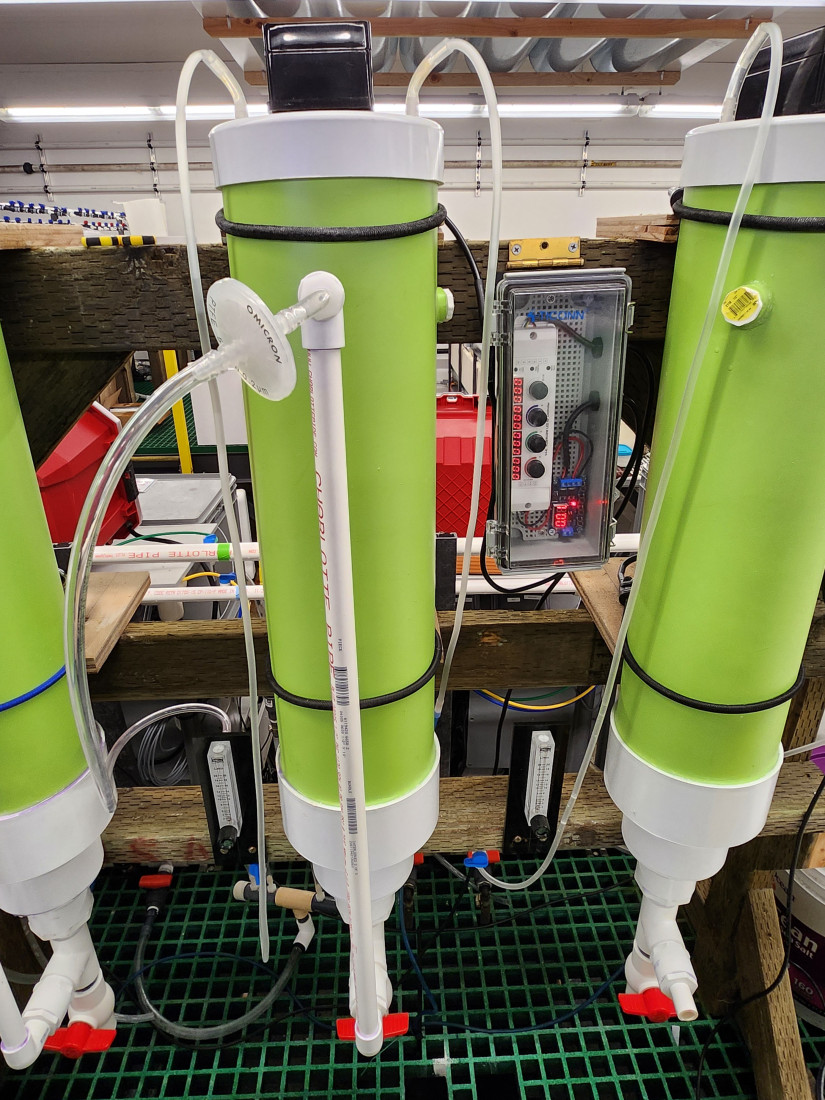
Photo: CLASH system setup (P. Tahimic, Cal Poly Humboldt)
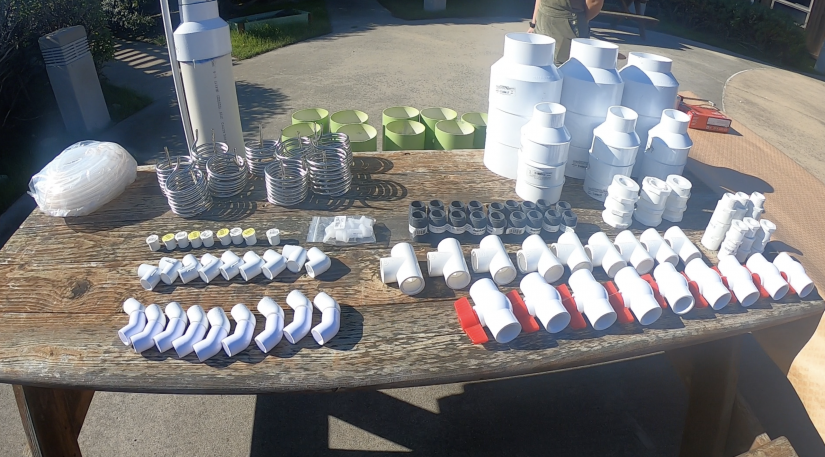
Photo: Materials for building multiple CLASH system main tubes (A. Palinkas, at Moss Landing Marine Laboratories)
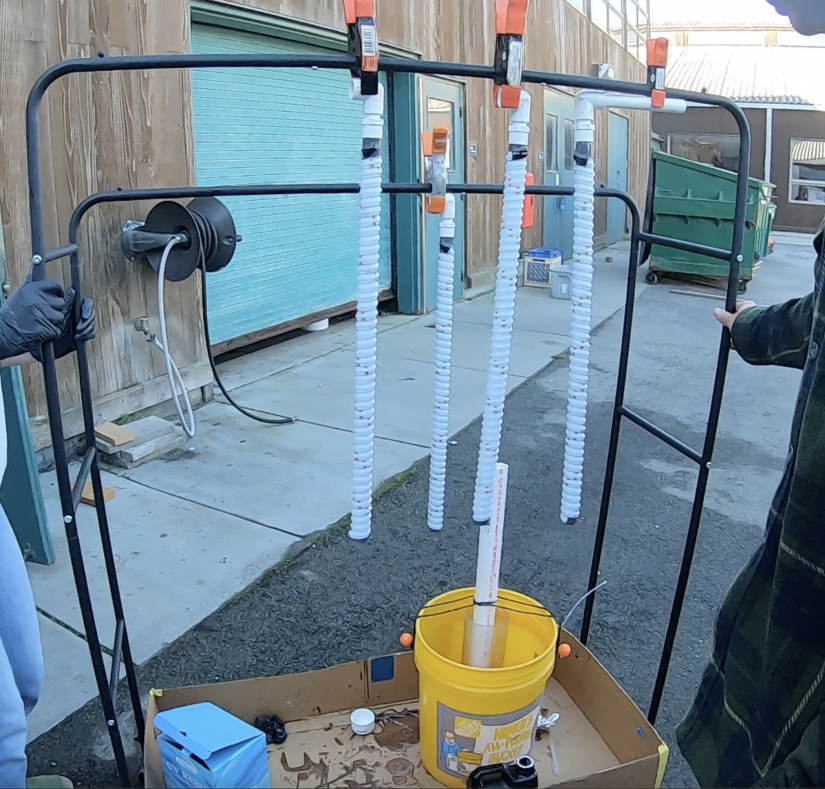
Photo: CLASH system core-light rods wrapped in LED light strips and dipped in epoxy are being wheeled into direct sunlight for curing (A. Palinkas, at Moss Landing Marine Laboratories)
Progress & Next steps
Prototypes of the CLASH system were built, tested, and refined by Project Team members leading to a Version 2.0 setup for which supplementary guidelines & instructions, Standard Operating Procedures and FAQ's are being developed. Finalized documents will be made available to new growers and hosted on the California Sea Grant website - stay tuned!
Associated project team
- Theresa Talley, Lead PI, California Sea Grant
- Michael Graham, co-PI, Moss Landing Marine Laboratories
- Scott Hamilton, co-PI, Moss Landing Marine Laboratories
- Rafael Cuevas-Uribe, co-PI, Cal Poly Humboldt
- Matt Edwards, co-PI, San Diego State University
- Ashleigh Palinkas, Staff Research Associate, California Sea Grant
- Dan Gossard, Professional, Moss Landing Marine Laboratories
- Andrew Kim, Professional, Moss Landing Marine Laboratories
- Jessica Franks, Graduate Student Research Assistant, San Jose State University
- Lucie Gaw, Graduate Student Research Assistant, San Jose State University
- Jacob Ogawa, Graduate Student Research Assistant, San Diego State University
- Phillip Tahimic, Graduate Student Research Assistant, Cal Poly Humboldt
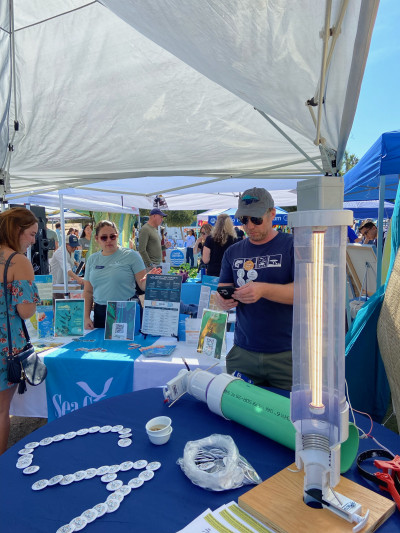
Photo: CLASH Version 1.0 display and demonstration at the California Seaweed Festival in San Diego, CA November 2023 (T. Talley, California Sea Grant)
 Theresa Sinicrope Talley
Theresa Sinicrope Talley